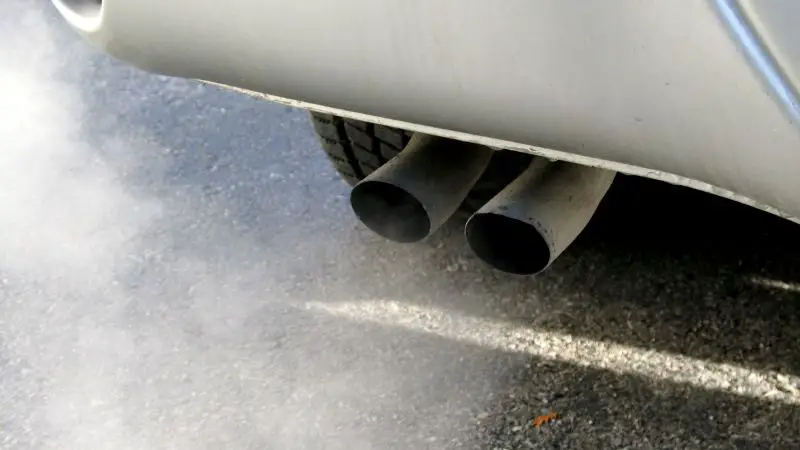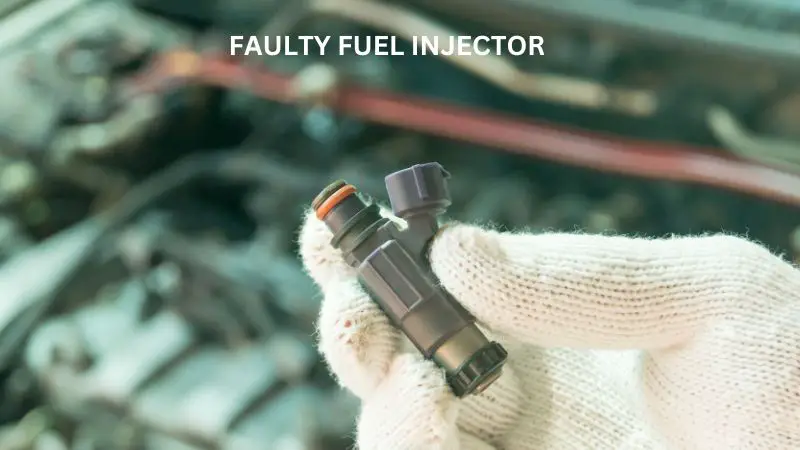Have you recently changed the oil in your automobile and thought you did everything fine? But after the oil change, you start the vehicle and see white smoke emitting from the exhaust pipe. Well, though it’s not normal, you don’t know why. And that’s why you may ask us why my car is blowing white smoke after an oil change is?
Additionally, white smoke has many causes. White smoke is coming from the exhaust; you should fix it immediately. Please read to learn more about the causes of white exhaust smoke and possible solutions.

Why Is White Smoke a Problem?
Your car’s emissions can tell you a lot about its performance. Since exhaust fumes are composed of byproducts from combustion in the engine, the fumes may have some color. Most of the time, the fumes should be visible or slightly grey.
Black white and blue smoke is not regular. This problem points to your car burning through too much oil. It’s sad when your engine burns; it loses the lubrication needed to protect engine elements from heat and friction. But there are other problems that you should worry about. Damaged cylinders, wrong oil, broken head gaskets, and more will be concerning.
Keeping your automobile in good shape is crucial. That’s why we must figure out what’s happening right now. Let’s talk about the reasons for cars smoking after an oil change.
Excess Oil In Sump
While driving down the road, you may see blue-white smoke in your car’s rearview mirror. Yes, it’s not good. Blue-white smoke indicates oil around the sump, usually caused by too much oil in the reservoir. If there are too many, it can cause problems. The best option for you is to remove some of the oil.
You Used The Wrong Oil
There are different grades of viscosity of engine oil for a reason. If you put the wrong type, it can cause complications. Additionally, the oil won’t burn properly, causing much of it to be wasted.
To avoid this problem, always consult the car manual or do a quick Google check before putting in oil. You should follow the manufacturer’s recommendations. It’s because the lousy oil grade can cause white smoke. Fortunately, this issue is relatively easy to correct.
A Cylinder Cracks
A cracked cylinder is a path where oil enters the engine, producing white smoke from the exhaust. Of course, white smoke isn’t the only symptom you’ll experience. Other symptoms include rough running, low coolant, engine misfires, burning gas in the cooling system, and flashing warning lights.
It would help if you had it checked by an auto technician because it can cause other severe problems.
Blow Head Gasket
Blow head gaskets are another reason that makes you nervous. Sometimes, white smoke indicates a problem with the cooling system. And it means exposing the coolant to high pressures and temperatures, like a blown head gasket seal. Moreover, if you believe a blown head gasket is the cause, it’s best to take your car to a professional.
Leakage Valve Stem Seal
When valve stems seals don’t work correctly, oil can enter the explosion chamber. There the engine oil burns and produces white smoke. This causes shows slowly so that you may notice this problem later. But you may see your acceleration power isn’t the same as before.
But the good news is that replacing the valve stem is simple. Small rubber pieces are located on both sides of the valve. To remove them, you will need a good pair of pliers. Optionally, take your vehicle to an auto body repair shop.
How To Fix White Smoke Coming From The Exhaust?
There is no universal solution to blowing white smoke from your exhaust. However, to deal with white smoke, you must identify sources of problems. After determining, you should take appropriate action. Continue reading to learn different solutions to different issues.
Fix the Damaged Cylinder Head:
It would help if you replaced the defective cylinder head rather than repaired it. Automobile overheating can damage any component, even the cylinder head. Ergo, ensure your automobile does not frequently overheat to avoid cylinder head breakage.
Fix Accumulated Condensation:
Adequately, this is the only problem that will solve itself. You have to be patient, that’s all. Therefore, it will disappear quickly after the smoke is gone.
Fix Faulty Fuel Injector:
Repair requires fuel injector replacement or cleaning. To keep the engine running correctly, you should repair all injectors whenever you replace fuel injectors. Only when the injector is stuck do you not clean it. If you choose to DIY, cleaning your fuel injectors is easy.
Oil Leak Remedy:
To complete this, you must replace the valve seals and piston rings. However, valve seals are costly compared to piston rings. Hence, leaving them to a mechanic would be best, as you must disassemble the engine.
Repair The Damaged Coolant Reservoir Tank:
Despite the rarity, you must repair the coolant reserve tank if it sustains damage.
Restore a Damaged Engine Block:
You can’t ignore a damaged engine block. As a result, it can damage more things. Mainly, if you can’t replace it, you can rebuild it. Any procedure you decide on will need the assistance of a professional.
Restore a Cracked Head Gasket:
Accordingly, you can’t repair a cracked head gasket, so you should replace it. Lastly, if you can see white smoke after adding oil, you should restore a cracked head gasket to remove this problem.

White Smoke After Engine Flush?
The flush solvent dissolves the carbon and gunk around the piston and grooves and dries like glue. As a result, the rings stick to the piston.
The rings weren’t even worn; they stuck to the piston. But if you want them out of the cylinder, you can’t. It’s because they are tough to remove. That’s why it’s better to rebuild it.
Why White Smoke After Oil Change Motorcycle?
Smoking inside a motorcycle engine can be caused by worn piston rings that cause oil to enter the chamber. Motorcycle smoke can also result from an external engine oil leak. The reason for this is burning from the engine’s heat and poorly grounded wires. It can be because of newly installed exhaust wraps that must be fully cured.
FAQ(Frequently Asked Questions):
Q. Will my car smoke if I need an oil change?
Yes, if you notice smoke from the car’s exhaust pipe, the oil may be unsuitable for the engine. A regular oil change can solve the problem.
Q. Why is the car blowing blue smoke after an oil change?
Blue exhaust smoke indicates an oil leak, and your machine burns oil. This is the time to check out these problems with a qualified technician. Various issues, such as damaged piston rings, valve seals, or worn cylinder walls, can cause leaks.
Q. Can an oil change cause white smoke from the exhaust?
Putting the new oil on your engine removes soot and varnish deposits from the valve and cylinders. In this way, it uses or burns more oil from vehicles and emits smoke.
Q. Can an oil leak cause white smoke?
If oil spills into the engine, it can burn and send smoke without overheating. The color of the smoke can be blue or gray. Yet, if you see white smoke under the hood, it is likely burning coolant. That means it has come into contact with hot equipment under your hood.
Final Word:
The question was, “Why is my car blowing white smoke after an oil change?” Hopefully, now you get your answer. It’s because we have adequately discussed the reasons and solutions to these questions. We hope you know that valve stem seal leaks, using the wrong oil, and other problems can make white smoke.
Ultimately, if you don’t correct all of these problems immediately, it turns into serious trouble. Overall, to avoid making sure you take care of your car regularly. Reading your owner’s manual before changing your oil will be best.
READ ALSO: HOW TO SPOT & FIX EXHAUST MANIFOLD OIL LEAK
